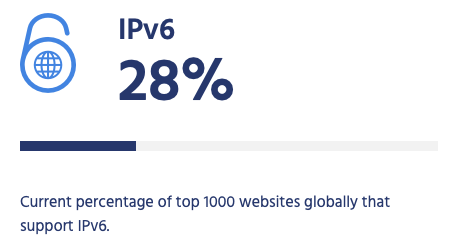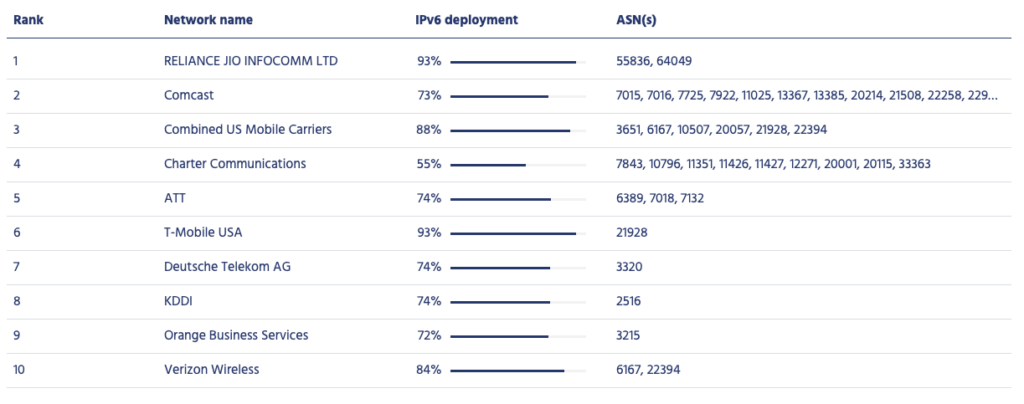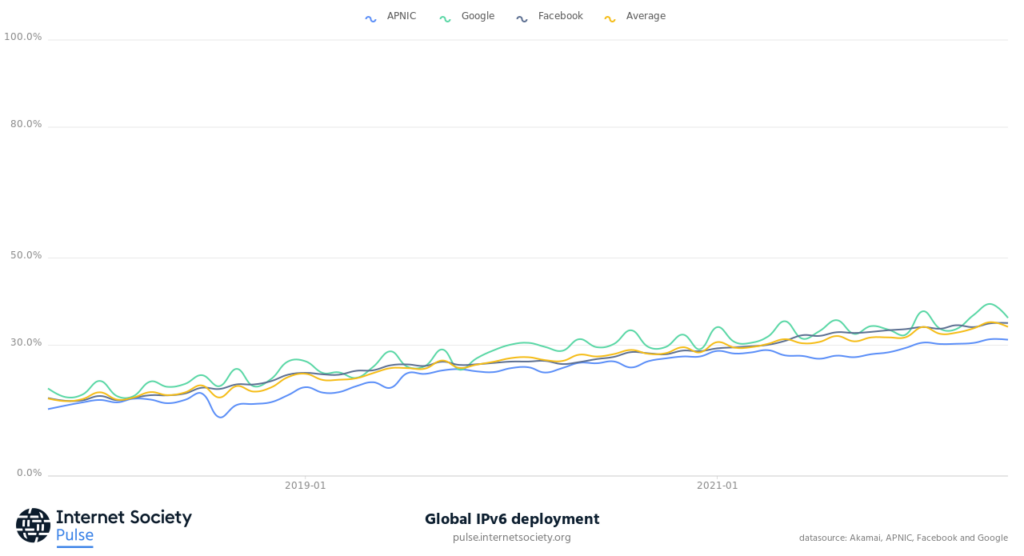On Internet Society Pulse we present a variety of different measurements that help to illustrate the extent and variation in IPv6 deployment around the world and across the networks that comprise the global Internet. June 2022 marks the 10-year anniversary of World IPv6 Launch so we thought this would be a good time to reflect on some of the progress in IPv6 deployment we’ve seen over the years and how we track deployment on Pulse.
IPv6 is the latest version of the fundamental technology (Internet Protocol) that powers the Internet. The previous version, IPv4, is still in operation on many networks around the world. However, as each device connected to the Internet must have a unique identifier, it can only support an Internet of a few billion devices. By contrast, IPv6 can support an Internet of billions of billions of devices and can provide enough address space to meet the needs of the growing Internet for decades to come. Simply put, the Internet has outgrown its original design and IPv6 is the solution to ensure that the Internet can keep expanding.
IPv6 on the Web

Firstly we have the percentage of Top 1,000 websites that are reachable via IPv6. This measure hovers around the 30% mark depending slightly on which sites are included in the list. Clearly, even for popular web content, there’s a lot of work required to make IPv6 reachability commonplace. It’s obvious that the incentives for website owners and network operators to deploy IPv6 are very different when we consider that some of the largest IPv6 network operators in the world have websites that arestill not IPv6 capable!
Global Diversity

We also present the diversity of deployment in our global IPv6 deployment map. This view is drawn from a dataset combined from multiple data partners to try to give a balanced view across different measurement methodologies and content sources. It shows India out in front with nearly two-thirds of connections from Indian end-users to popular content sources using IPv6. The USA is also worth highlighting as the 50% threshold was passed there recently so that now the majority of connections to IPv6-capable content sources will use IPv6.
Network Operator Measurements

We also present network operator measurements that illustrate the share of IPv6 deployment reaching our data partners over IPv6. These measurements are combined from multiple sources to balance out varied measurement methodologies and other potential biases. It’s clear from this data that where an operator enables IPv6 across its networking footprint, very high levels of IPv6 usage are to be expected.
The Big Picture

Finally, we present a global view from multiple vantage points, including an average value that shows steady progress over time. This is perhaps the clearest illustration that, when viewed across the entire network, IPv6 deployment still has a long way to go. Having said that, we might expect to see IPv4 become the minority internetworking protocol on the Internet, by this metric, in just a few years from now.
Follow @isoc_pulse on Twitter to stay up to date with the latest IPv6 deployment milestones.
Photo by Steve Johnson on Unsplash


